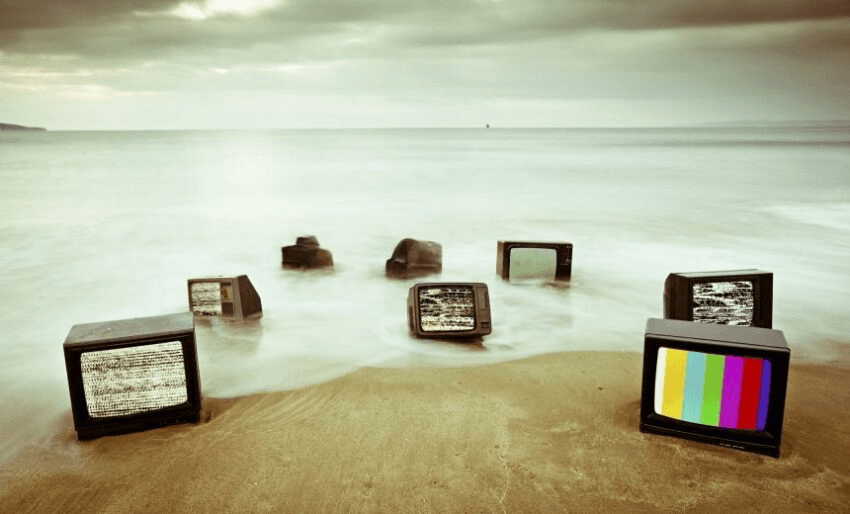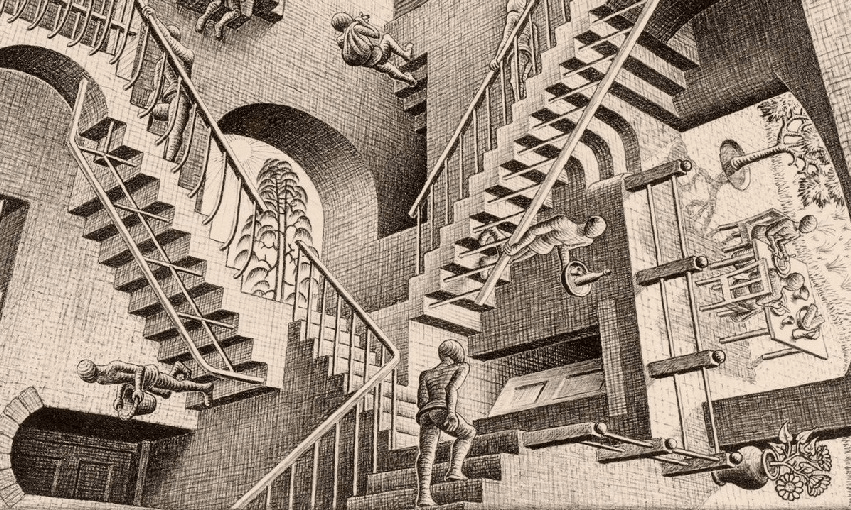Yesterday, Henry Oliver embarrassed his future-self with predictions for last night’s New Zealand Music Awards. Today he updates that post with the actual results and the requisite quippy commentary.
Yesterday: The biggest night of the musical year – the New Zealand Music Awards, brought to you by some communications services company – is tonight! was last night! And just in case there’s still a market for predictive data-driven (okay, not really) journalism after a year-and-a-half of presidential elections, I thought I’d put my hard-earned reputation as the Nate Silver of New Zealand Music on the line with a bold prediction for every category (except the quantitative ones which you can just google for yourself). How could this possibly go wrong?
Update: Okay, it kinda did go wrong. Or, at least, some of it went wrong, about half of it, which means that half of it also went right. Very right. So whether you think I did well or poorly is just a reflection of your entire worldview. So, it’s on you now, not me.
All results are below. Winners are in bold. Where my prediction was correct, I’ve given myself a little tick ✔️. Where my prediction was wrong, I’ve struck it out and given myself a little cross✖️. Cool? Cool.
Yesterday’s explanations remain in non-italics, updates are in italics. Got it? Got it.
Album of the Year
Aaradhna – Brown Girl ✖️
Broods – Conscious
Fat Freddy’s Drop – BAYS
Hollie Smith – Water Or Gold
Tami Neilson – Don’t Be Afraid
The Phoenix Foundation – Give Up Your Dreams
Aaradhna. Brown Girl is an excellent, super-relevant album in content with multiple musical sweet spots. Plus, it’s perfect time to reward an artist with a decade of excellent releases. Even though she won big three years ago and those big nights rarely strike twice, I see a big night for Aaradhna in my crystal ball.
Update: Broods won. The album’s okay, I guess. Not as good as the first one though.
Single of the Year
Aaradhna – ‘Brown Girl’ ✖️
Broods – ‘Free’
KINGS – ‘Don’t Worry Bout’ It’
MAALA – ‘Kind of Love’
The Naked and Famous – ‘Higher’
Shapeshifter – ‘Stars’
‘Brown Girl’. Sorry for the obvious – it’s just a fucking great song of politics and pathos. Check out our interview with Aaradhna where she talks through the songs and all the issues surrounding it here.
Update: Broods won. This song’s okay, I guess. No better than okay though.
Best Group
Broods – Conscious ✔️
Fat Freddy’s Drop – BAYS
The Phoenix Foundation – Give Up Your Dreams
Sol3Mio – On Another Note
My head says Broods – because they’re super successful and most strongly represent the hopes and dreams of the New Zealand post-Lorde slip-stream – or Fat Freddy’s Drop – because they’re Fat Freddy’s Drop and New Zealand loves Fat Freddy’s Drop – but my heart says The Phoenix Foundation, particularly off the strength of the album’s title-track, which perfectly sums up, in a way I hadn’t heard before on a rock album, that moment you realise life’s not going to be everything you thought it might. As someone who’s given up on many dreams, it struck a chord. But, still, the judges probably don’t care about the striking of my chords, so … Broods.
Update: Told you so.
Best Male Solo Artist
Avalanche City – We Are For The Wild Places
Dave Dobbyn – Harmony House
Lawrence Arabia – Absolute Truth ✖️
MAALA – Composure
Lawrence Arabia – he doesn’t seem to love awards, but awards judges love him. And so do I.
Update: Turns out they love him as an alt, but slightly less so as a solo male. Or at least not as good of a solo male as MAALA.
Best Female Solo Artist
Aaradhna – Brown Girl ✔️
Hollie Smith – Water Or Gold
Ladyhawke – Wild Things
Tami Neilson – Don’t Be Afraid
Aaradhna. As above. Every year, one act wins an armful of awards. I’m putting my money on this being Aaradhna’s year. If Broods and Tami Neilson (another judge’s fave) win all the categories, I’ll have to crowdfund the settlement of my gambling debt.
Update: Told you so.
Breakthrough Artist of the Year
KINGS – ‘Don’t Worry Bout’ It’
Leisure – ‘All Over You’ ✖️
nomad – ‘Oh My My’
SACHI – ‘Lunch with Bianca’
Um… Leisure? Everyone seems to like them way more than I do but, hey, you can’t argue that they haven’t had a ‘breakthrough’ kind of a year. Their singles have been blogged about endlessly by bloggers on their blogs and their deluxe LP has been available for purchase at (at least one of) Auckland’s coolest cafes. Maybe it’s not them, it’s me.
Update: I’m down with this. Great song, and a cool solo dad, apparently.
Best Rock Album
Beastwars – The Death Of All Things ✖️
Jordan Luck Band – Not Only… But Also
Villainy – Dead Sight
Beastwars. The opening riff of ‘Call the Mountains’ should win this award on its own.
Update: Don’t know what to say about this one. I stand by that riff and won’t hear any different.
Best Pop Album
Avalanche City – We Are For The Wild Places
Broods – Conscious ✔️
MAALA – Composure
Honestly, I’m not sure. These are all capable, skillfully made albums, none of which lit a fire anywhere near my ass. Let’s just call it for … Broods. People still love Broods, right?
Update: Yes, people still love Broods.
Best Alternative Album
Lawrence Arabia – Absolute Truth
The Phoenix Foundation – Give Up Your Dreams
Silicon – Personal Computer ✖️
I know … I awarded predictive awards to the other two finalists in this category, but if I’m going with the album I’ve just flat out wanted to press play on the most, it’s Silicon’s Personal Computer. I even wrote a profile of Kody Nielson (plug!) while listening to a lo-fi advance stream on this album on repeat for hours and never got tired of it. I’m even listening to it now and it still sounds great – shiny, intense and plain weird.
Update: Great album. No complaints (other than the screwing up of my prediction).
Best Urban/Hip Hop Album
Aaradhna – Brown Girl ✔️ (kinda)
PNC – The Luke Vailima EP
SWIDT – SmokeyGotBeatz Presents SWIDT vs EVERYBODY
Just gonna add to Aaradhna’s armful here, but, even though they’re probably going to lose, you should definitely check out these other two. Local rap music doesn’t get the attention it once did, but these should’ve been more central on people’s radar – PNC the veteran, SWIDT (‘See What I Did There’) the rookies.
Update: Stop reading this and read this, then this, then this. You understand now, right?
Best Roots Album
Fat Freddy’s Drop – BAYS ✖️
Rob Ruha – Pūmau
Unity Pacific – Blackbirder Dread
Fat Freddy’s. Fun fact: The Drop hold the best press events in the game – oysters, paua wontons, fried chicken, all made by the band. It’s legit.
Update: I’m cool with this.
Best Electronic Album
Electric Wire Hustle – Aeons
Opiuo – Omniversal
Pacific Heights – The Stillness ✔️
Pacific Heights – the solo project of former-Shapeshifter Devin Abrams – gets just far enough away from being ‘New Zealand’s James Blake’ to be a winner.
Update: Told you so.
Te Māngai Pāho Best Māori Album
Dennis Marsh – Maori Songbook 2 ✖️
Kirsten Te Rito – Āiotanga
Rob Ruha – Pūmau
Dennis Marsh. I need to know more about the connection between Māori music and country music. Shit, did I just pitch myself in public? Maybe. If you’ve got an in on this, pitch me. I’m also obsessed with people who achieve big things at an, um, advanced age and since Marsh released his first album well into his 30s, he’s made like 25 of them and Maori Songbook (the first one, not this one) became his first No. 1 on the New Zealand Album Chart when he was 60. Amazing!
Update: Still into that story if you are…
Best Worship Album
Edge Kingsland – Edge Vol. 3: The Common Good ✔️
Grace Vineyard Music – Seek You
LIFE Worship – By My Spirit
I’m gonna level with you – I haven’t listened to any of these albums, so let’s take a stab in the dark and say … Edge Kingsland. Why? I like the name Edge Kingsland and ‘The Common Good’ is vaguely admirable.
Update: Told you so.
Best Classical Album
Anthony Ritchie and Ross Harris – Fjarran ✔️
Kenneth Young – Shadows and Light
Zephyr – Zephyr
Again, I’ll admit – I’m not familiar with any of these. Let’s go with Anthony and Ross. I like to think of them as best buds who just love making classical music together. (Please tell me I’m right.)
Update: Told you so.
People’s Choice Award
Broods ✔️ (kinda)
Fat Freddy’s Drop
KINGS
MAALA
Sol3Mio
This award will depend entirely on turnout. Who will go to the polls? Who’s got the most effective ground game? Who’s got the best social media strategy? Who’s micro-targetting the likely voters? If the turnout skews young, Broods have the advantage in a tight race taking the plurality of votes but not the majority. If it leans older, Sol3Mio have 76.8% chance of a majority. If it’s somewhere in between, Fat Freddy’s with a 64.1% chance of taking 43.8% of the vote – short of a mandate, but enough to take the trophy. But, if there’s some unforeseen forces in the electorate, who knows what that could mean for all-caps new-comers MAALA and KINGS.
Update: Okay, so I hedged the fuck out of this one, but I’m taking it and because I, and not you, am writing this, there’s nothing you can do about it.
Legacy Award
I reckon it’s going to be … Dave Dobbyn! Nah, just jokes. SPOILER ALERT: It’s Bic Runga. ✔️
Update: I can take this one too, right? (Also, FYI, Bic’s album is out today and it’s great so you should listen to it.)
Highest Selling Single
You could probably look this up somewhere, but that would spoil the fun, so I’m not going to do that for you.
Update: Six60 – ‘White Lines’
Highest Selling Album
As above.
Update: Sol3Mio – On Another Note
Radio Airplay Record of the Year
Same. (Though maybe you can’t look that up. I’m not sure. But I almost never listen to terrestrial radio, so your guess is as good as mine.)
Update: Six60 – ‘White Lines’
International Achievement
Broods? Broods. ✖️
Update: Fat Freddy’s Drop
Official telly
✔️✔️✔️✔️✔️✔️✔️✔️✔️✖️✖️✖️✖️✖️✖️✖️✖️✖️ (.500)
Tune in tonight (8:30pm on TV3) (or come back here tomorrow) to find out how wrong I was.
The Spinoff’s music content is brought to you by our friends at Spark. Listen to all the music you love on Spotify Premium, it’s free on all Spark’s Pay Monthly Mobile plans. Sign up and start listening today






